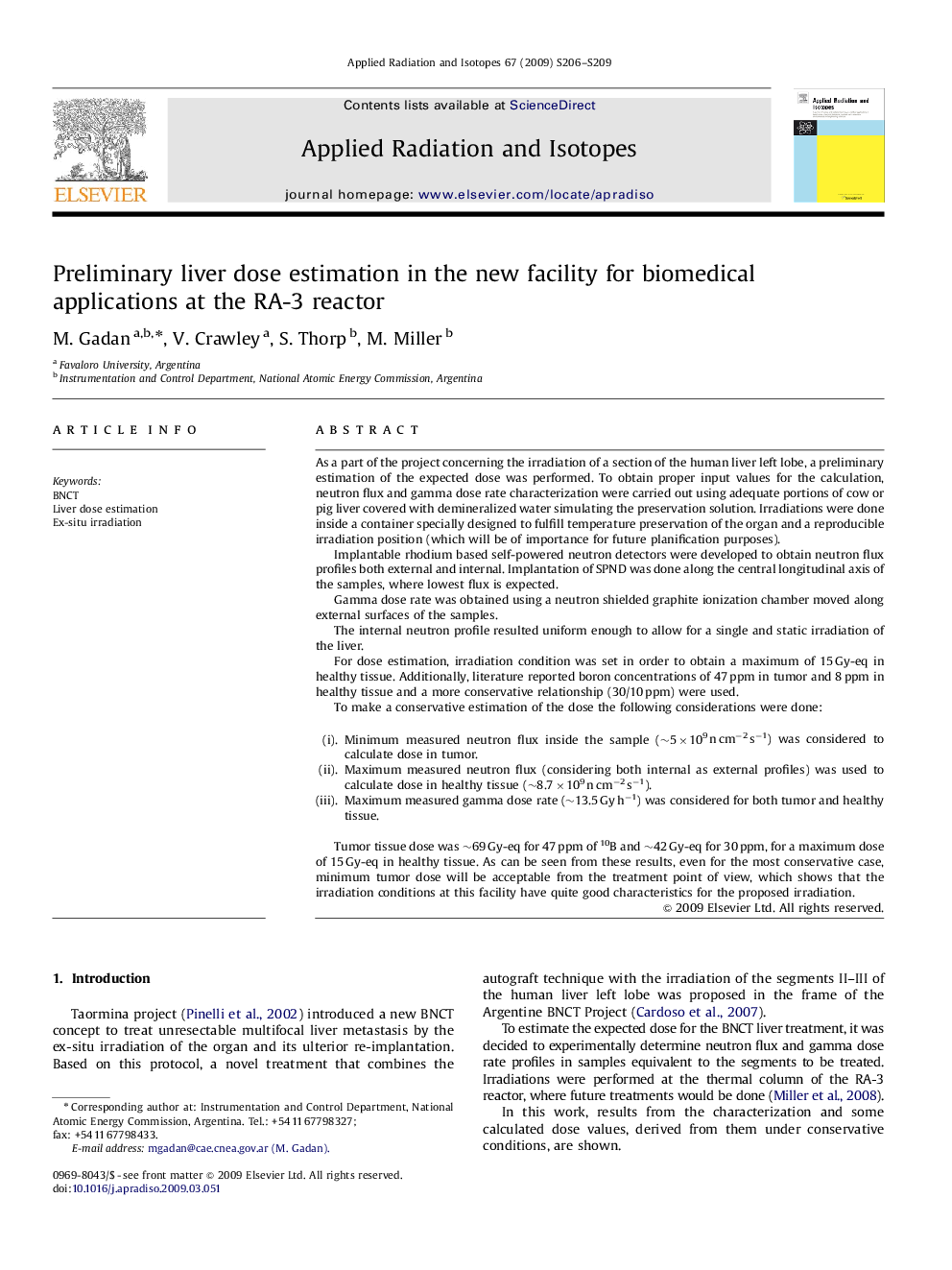| Article ID | Journal | Published Year | Pages | File Type |
|---|---|---|---|---|
| 1876926 | Applied Radiation and Isotopes | 2009 | 4 Pages |
As a part of the project concerning the irradiation of a section of the human liver left lobe, a preliminary estimation of the expected dose was performed. To obtain proper input values for the calculation, neutron flux and gamma dose rate characterization were carried out using adequate portions of cow or pig liver covered with demineralized water simulating the preservation solution. Irradiations were done inside a container specially designed to fulfill temperature preservation of the organ and a reproducible irradiation position (which will be of importance for future planification purposes).Implantable rhodium based self-powered neutron detectors were developed to obtain neutron flux profiles both external and internal. Implantation of SPND was done along the central longitudinal axis of the samples, where lowest flux is expected.Gamma dose rate was obtained using a neutron shielded graphite ionization chamber moved along external surfaces of the samples.The internal neutron profile resulted uniform enough to allow for a single and static irradiation of the liver.For dose estimation, irradiation condition was set in order to obtain a maximum of 15 Gy-eq in healthy tissue. Additionally, literature reported boron concentrations of 47 ppm in tumor and 8 ppm in healthy tissue and a more conservative relationship (30/10 ppm) were used.To make a conservative estimation of the dose the following considerations were done:(i).Minimum measured neutron flux inside the sample (∼5×109 n cm−2 s−1) was considered to calculate dose in tumor.(ii).Maximum measured neutron flux (considering both internal as external profiles) was used to calculate dose in healthy tissue (∼8.7×109 n cm−2 s−1).(iii).Maximum measured gamma dose rate (∼13.5 Gy h−1) was considered for both tumor and healthy tissue.Tumor tissue dose was ∼69 Gy-eq for 47 ppm of 10B and ∼42 Gy-eq for 30 ppm, for a maximum dose of 15 Gy-eq in healthy tissue. As can be seen from these results, even for the most conservative case, minimum tumor dose will be acceptable from the treatment point of view, which shows that the irradiation conditions at this facility have quite good characteristics for the proposed irradiation.
